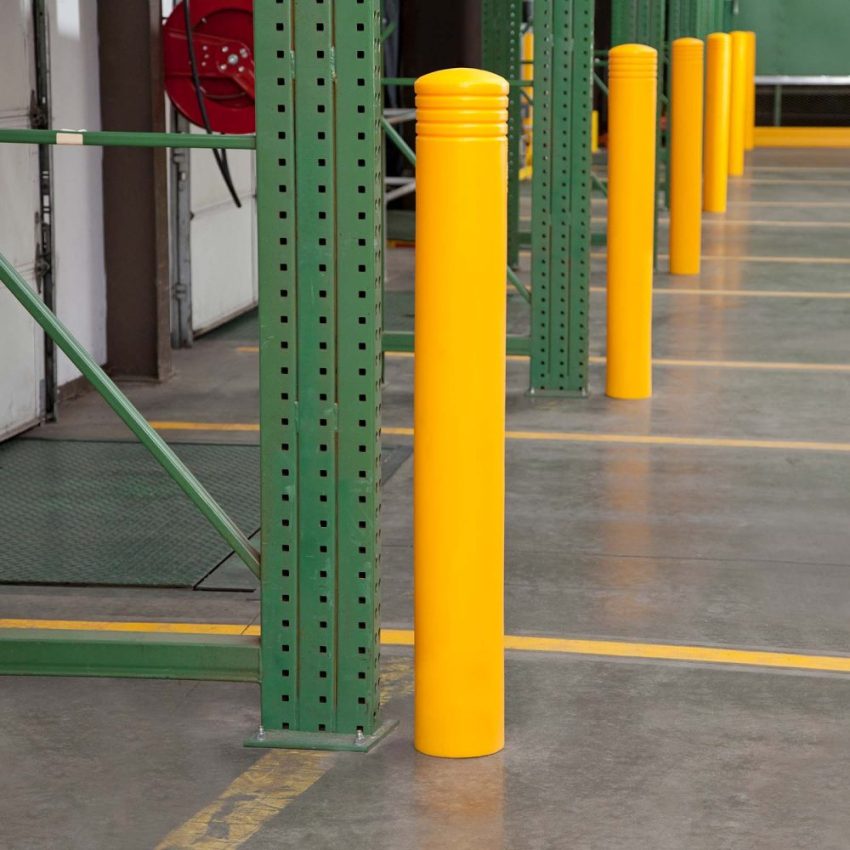Bollards are sturdy, vertical posts that are used to control or direct vehicle and pedestrian traffic, and to protect buildings and pedestrians from vehicular attacks. They can be installed on roads, sidewalks, and around buildings to create physical barriers that prevent unauthorised access or protect against potential threats.
One of the main uses of bollards is to prevent unauthorised vehicles from gaining access to sensitive areas, such as warehouses. A warehouse is a large commercial building where goods and materials are stored. These facilities are often located in industrial areas, and are typically surrounded by fences or walls to deter unwanted visitors. However, these barriers can be easily breached by a determined intruder, which is where bollards come into play.
When installed around the perimeter of a warehouse, bollards act as a physical deterrent that prevents vehicles from breaching the facility’s security. They can be placed at strategic locations, such as at the entrances and exits, to create a barrier that blocks access to unauthorised vehicles. Bollards can also be used to protect against potential vehicular attacks, such as those carried out by terrorists or other hostile groups.
One of the key advantages of using bollards to secure a warehouse is that they are highly visible and difficult to ignore. This can help to deter potential intruders, who may be less likely to attempt to breach the facility’s security if they see the bollards in place. Additionally, bollards are typically made from durable materials, such as steel or concrete, which makes them difficult to destroy or remove. This means that even if an intruder does attempt to breach the security of a warehouse protected by bollards, they will likely be unable to do so without significant effort.
There are several different types of bollards that can be used to secure a warehouse, depending on the specific security needs of the facility. Removable bollards, for example, can be easily installed and removed as needed, allowing authorised vehicles to enter the warehouse when necessary. Fixed bollards, on the other hand, are permanently installed and provide a more permanent barrier to unauthorised vehicles. Retractable bollards, meanwhile, can be raised and lowered as needed, allowing authorised vehicles to enter the warehouse when the bollards are lowered and preventing unauthorised access when they are raised.
Regardless of the type of bollards that are used, it is important to ensure that they are properly installed and maintained. Bollards that are damaged or not properly installed can be easily bypassed by unauthorised vehicles, negating their effectiveness as a security measure. It is also important to consider the specific security needs of the warehouse, as well as any potential vulnerabilities, when deciding where to install bollards. By carefully considering these factors, it is possible to use bollards effectively to prevent unauthorised access to a warehouse and protect against potential threats.
